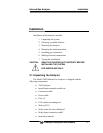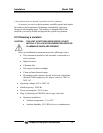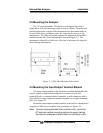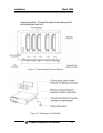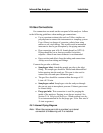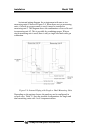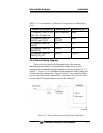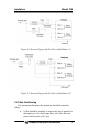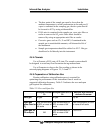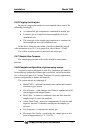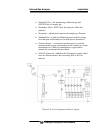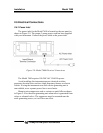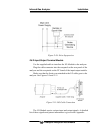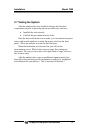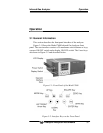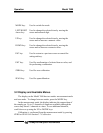
Infrared Gas Analyzer Installation
Teledyne Analytical Instruments 29
• The dew point of the sample gas must be lower than the
ambient temperature to avoid condensation in the analyzer. If
vapor is contained in the sampling gas, the dew point should
be lowered to 0°C by using a dehumidifier.
• If SO
2
mist is contained in the sample gas, use a mist filter or
cooler to remove the SO
2
mist. Other mists should be
removed by using an appropriate mist filter or cooler.
• Corrosive gases such as Cl
2
, F
2
and HCl, if contained in the
sample gas in considerable amounts, will shorten the life of
the instrument.
• Sample gas temperature should be within 0 to 50°C. Hot gas
should not be fed directly into the instrument.
2.5.4 Flowrate
Use a flowrate of 0.5L/min ±0.2L/min. The sample system should
be designed to avoid any flow fluctuation during measurement.
Use a flowmeter to observe the flow reading as shown in the
external piping diagrams of Figures 2.5, 2.6 and 2.7.
2.5.5 Preparation of Calibration Gas
Routine calibration using calibration gases is required for
optimizing the performance of this instrument. Once a week is a
suggested calibration frequency. Table 2-2 indicates the zero and span
gas required for calibration.
Table 2-2: Zero and Span Gas
Analyzer without
O
2
Analyzer with built-in
O
2
Analyzer with external
zirconia O
2
sensor
Zero gas
N
2
gas N
2
gas Dry air
Span gas
other than for
O
2
t
Gas concentration
of 90% or more of
full scale
Gas concentration of
90% or more of full
scale
Gas concentration of 90%
or more of full scale
Span gas for
O
2
analysis
NA
Gas concentration of
90% or more of full
scale
1 to 2% O
2



